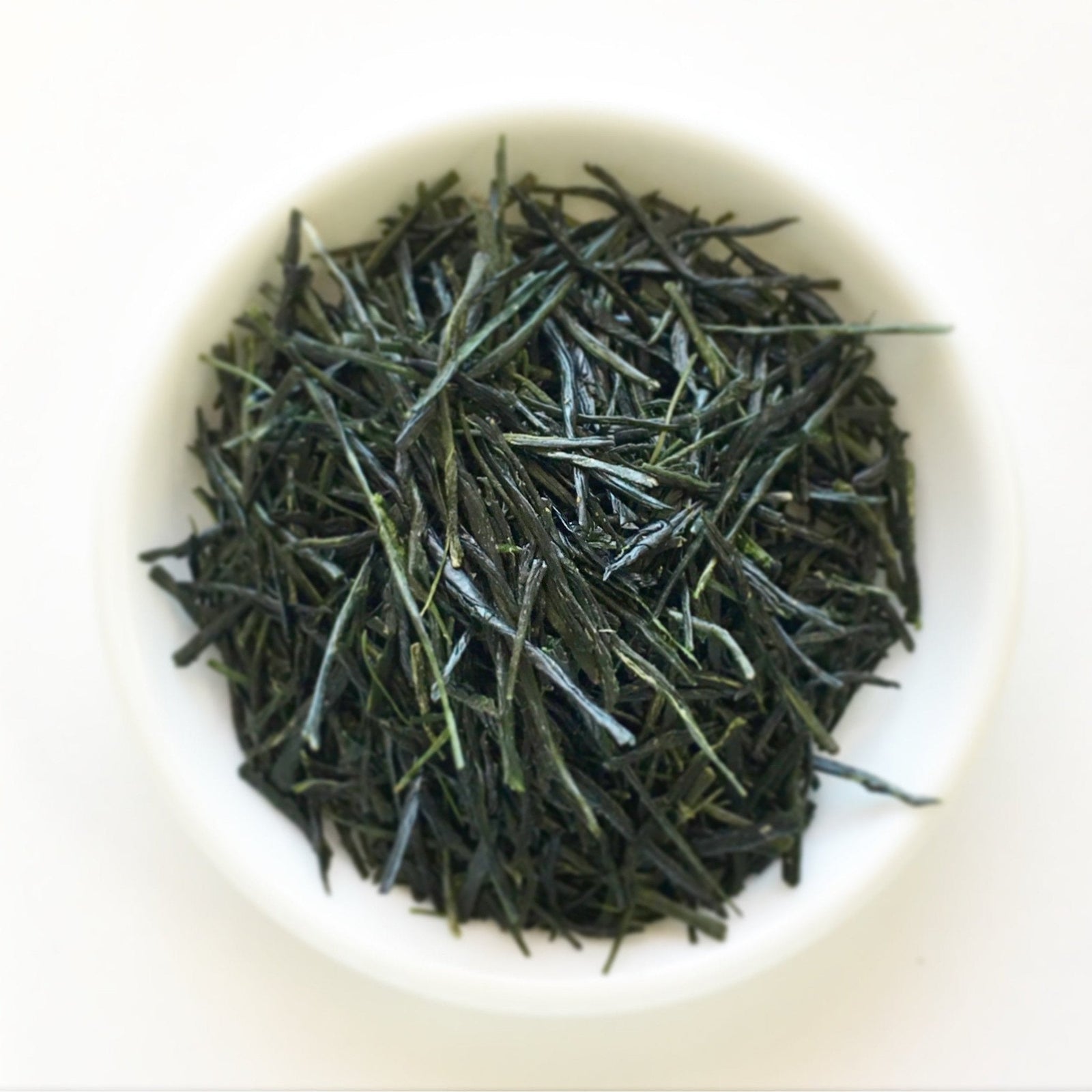The difference between Gyokuro, Kabusecha, Sencha, and Bancha green teas from Japan is best understood through the leaf itself--its cultivation, harvest, and the resulting flavor.
Click on categories below to visit the respective section on our shop
Sencha itself has a wide definition as tea leaf that is picked when young, steamed, rolled, and dried. This definition includes gyokuro and kabusecha as premium grades of sencha, but excludes bancha, which is processed in the same way as sencha but uses large, mature leaves.
The younger leaves that make up sencha tend to be more delicate, richer and more complex in its vegetal flavors than bancha, and much richer in L-theanine, the amino acid that generates a savory "umami" flavor prized by connoisseurs.
Bancha on the other hand, has very little umami flavor as a green tea, leaving a robust body focused on astringency and bitterness. However, since the definition of bancha is the size of the leaf, bancha can also refer to post processed teas made from large leaf (roasted teas that may or may not have been rolled, as well as post-fermented dark teas).
The more narrow definition of sencha serves to differentiate it from gyokuro and kabusecha. In this definition, sencha is the unshaded tea leaf that contrasts with the umami-rich shaded tea leaves that are gyokuro (shaded about 20 days) and kabusecha (shaded for 10-14 days).
In actual production, it isn't the days that define gyokuro and kabusecha but rather the strength of the umami flavor, and that strength is also determined by other cultivation factors such as fertilization.
One reason why organic gyokuro is so rare, is that farmers are limited in their fertilization techniques by the organic production requirements. The resultant leaf, while shaded for a 3 weeks, often does not have enough strength of umami to be considered gyokuro.
Kabusecha also, can be considered a low quality gyokuro if the umami flavor is strong enough.
Rather than a set definition then, you might think of these three teas as the a gradation of umami:
sencha --> kabuse --> gyokuro
least umami --> most umami flavor
When you think of the gradation like this, blending activities begin to make sense: to "increase" the quality of sencha, add shaded tea leaves like kabusecha (or shade the sencha for 4-7 days...which would not make it a kabusecha but would add increased umami flavors). Conversely, to increase the quantity of gyokuro, add kabusecha or sencha.


